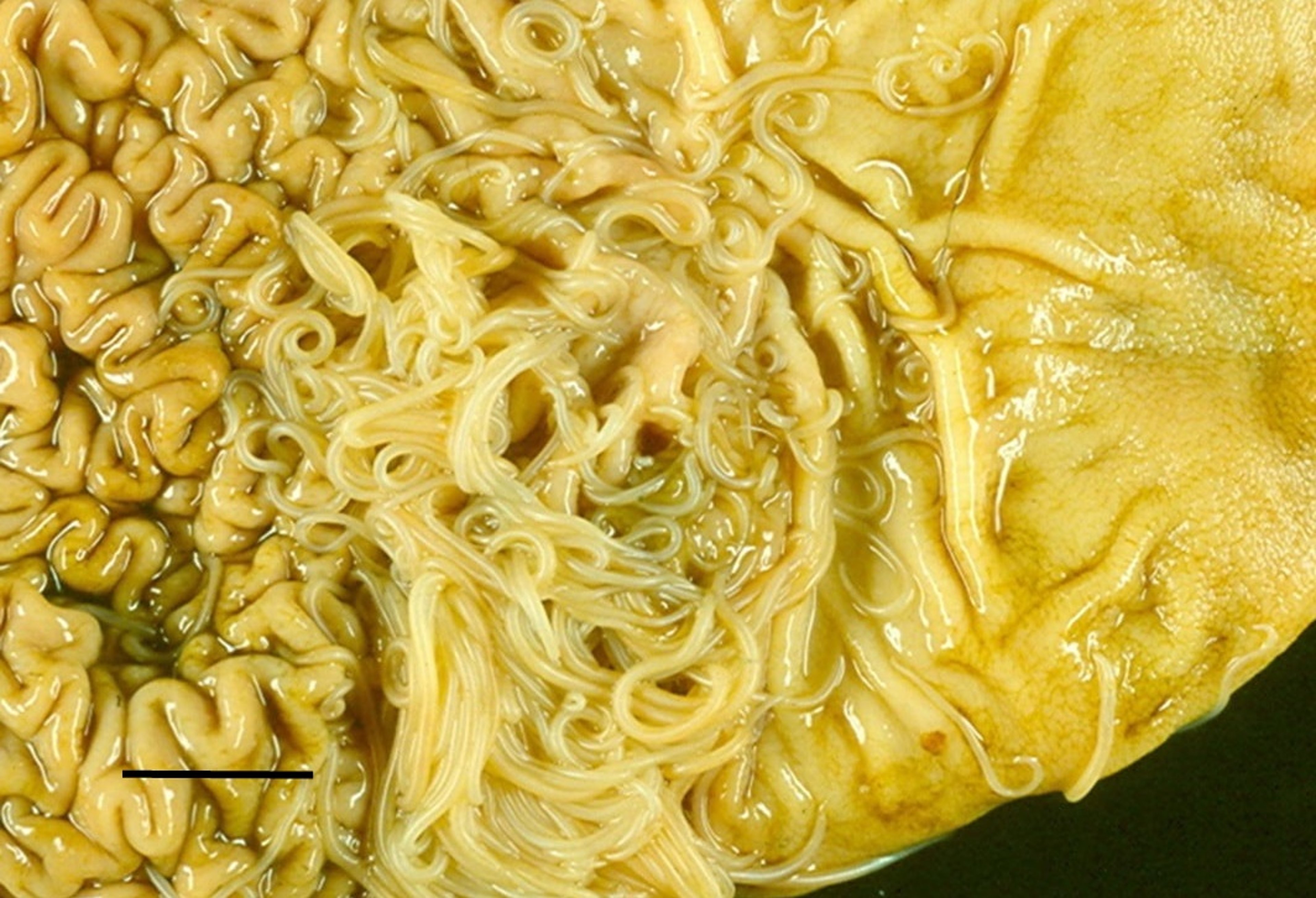Courtesy of the National Center for Veterinary Parasitology, Oklahoma State University.
Courtesy of the National Center for Veterinary Parasitology, Oklahoma State University.
Several species of Physaloptera, which are stomach nematodes of dogs and cats, occur throughout the world. They are usually firmly attached to the gastric mucosa. The males are ~30 mm long, and the females ~40 mm. The eggs are oval, 42–53 × 29–35 mcm, thick-shelled, and larvated.
Encysted infective larvae of Physaloptera spp have been found in several species of insects, including beetles, cockroaches, and crickets. Mice and frogs may be paratenic hosts. After the dog or cat ingests the intermediate or paratenic host, development of larvae to adults is direct. Although infections are often subclinical, these parasites may cause gastritis that can result in vomiting, anorexia, and dark feces. Bleeding, ulcerated areas remain on the gastric mucosa when the parasites move to other locations; in heavy infections, anemia and weight loss may develop.
Gastroscopy is the most efficient means of diagnosis, and immature worms are often found in the vomitus of puppies or kittens. The eggs are difficult to find in feces because they do not readily float; eggs are best detected by fecal sedimentation. Fecal flotation may be used; however, it is typically less sensitive.
For treatment of infected cats, pyrantel pamoate (5 mg/kg, PO, two doses 2–3 weeks apart; 20 mg/kg, PO, once) or ivermectin (0.2 mg/kg, SC or PO, two doses 2 weeks apart) can be administered for Physaloptera infections. In dogs, fenbendazole (50 mg/kg/day, PO, for 3 days), pyrantel pamoate (5 mg/kg, PO, two doses 2–3 weeks apart; 15 mg/kg, PO, two doses 2–3 weeks apart; 20 mg/kg, PO, once), or ivermectin (0.2 mg/kg, SC or PO, two doses 2 weeks apart) can be administered. None of these drug regimens is approved for treatment of Physaloptera in either dogs or cats.

